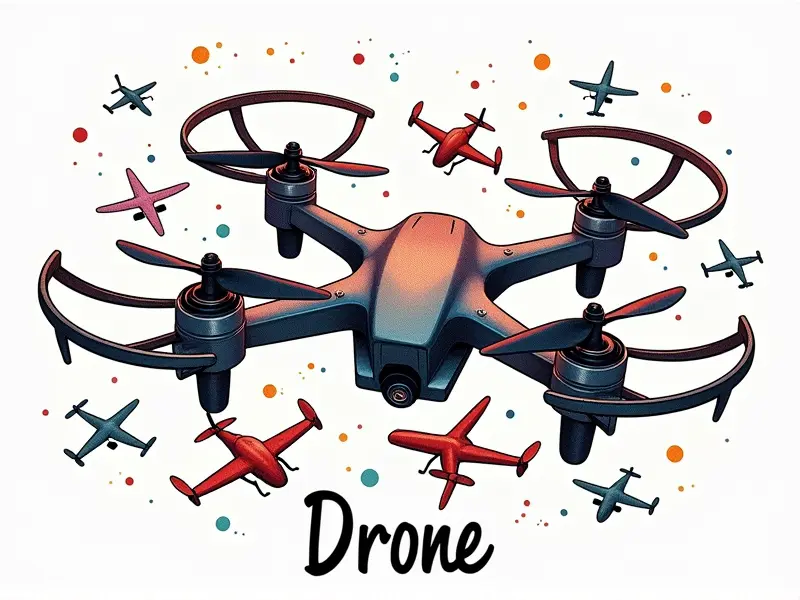Drone crash repair?

How to Fix a Crashed Drone Quickly
When your drone crashes, time is of the essence. Immediate action can prevent further damage and get your drone back in the air faster.
- Assess the Damage: Check for any visible cracks or broken parts immediately after landing.
- Power Down: Turn off the power to avoid electrical shorts that can cause further damage.
- Remove Propellers: Safely remove propellers and store them in a secure place.
DIY Guide: Repairing Damaged Drones
If your drone has sustained minor damage, you might be able to repair it yourself. Here’s how to get started:
- Gather Tools: Ensure you have the necessary tools like screwdrivers, pliers, and replacement parts.
- Disassemble Carefully: Take apart your drone gently to avoid causing more damage.
- Inspect Components: Look for any loose or broken components that need repair.
Essential Tips for Rebuilding Your Drone
Rebuilding a damaged drone can be challenging, but with the right approach, it’s manageable. Here are some tips to guide you through the process:
- Follow Instructions: Stick to the manufacturer's instructions when rebuilding.
- Test Connections: Ensure all electrical connections are secure before powering up your drone.
- Check Propellers: Make sure propellers are correctly installed and balanced for optimal performance.
Minimizing Damage in Post-Crash Drone Repairs
The goal after a crash is to minimize further damage. Here’s how you can do it effectively:
- Avoid Forced Movements: Don’t force parts that seem stuck; this can cause more harm.
- Clean Thoroughly: Remove dirt and debris from the drone to prevent corrosion.
- Replace Worn Parts: Swap out any components showing signs of wear or damage.
Common Fixes for Crashed RC Drones
Crashes often result in specific types of damage. Here are some common issues and their fixes:
- Battery Damage: Replace batteries if they show signs of swelling or leakage.
- Camera Issues: Clean camera lenses and replace any damaged mounts.
- Motor Problems: Inspect motors for wear and replace faulty ones to ensure smooth operation.
Reviving Your Drone After an Impact
Bringing your drone back to life after a crash requires patience and careful steps. Follow these guidelines:
- Initial Inspection: Conduct a thorough inspection for any immediate damage.
- Clean and Lubricate: Clean all components and apply lubricant where necessary.
- Troubleshoot Software: Check firmware updates to ensure your drone is running the latest software.
Save Money by Repairing Your Own Drone
Repairing a crashed drone yourself can save you significant money. Here’s how:
- Evaluate Costs: Compare repair costs with buying new parts or a whole replacement.
- Leverage Online Resources: Use online forums and tutorials to learn about DIY repairs.
- Invest in Quality Tools: Good tools can make the difference between an effective repair and further damage.
Essential Tools for Drone Crash Repairs
To effectively repair your crashed drone, having the right tools is crucial. Here’s what you need:
- Screwdrivers: Various sizes to handle different types of screws.
- Pliers and Tweezers: For delicate work and removing small components.
- Multimeter: To test electrical connections and diagnose issues.
Preventive Measures Before Drone Crashes
The best way to deal with a crashed drone is to prevent it from happening. Here are some tips:
- Familiarize Yourself with the Area: Know your flying area’s terrain and obstacles.
- Check Battery Levels: Ensure you have enough battery power for the flight duration.
- Regular Maintenance: Keep your drone in top condition through regular checks and maintenance.
Recover from a Drone Crash: A Checklist
A checklist can help streamline the recovery process after a crash. Here’s what to include:
- Assessment of Damage: Identify all visible damage immediately upon landing.
- Documentation: Take photos and notes for insurance purposes or future reference.
- Contact Support: Reach out to manufacturer support if you’re unsure about repairs.
Fixing Cracked Frames and Propellers
Cracks in frames and propellers are common after crashes. Here’s how to address them:
- Frame Cracks: Use epoxy or specialized repair kits for minor cracks.
- Propeller Damage: Replace broken propellers with exact replacements from the manufacturer.
- Inspection: Regularly inspect frames and propellers before flights to catch issues early.
Conclusion
Repairing a crashed drone can be daunting, but with the right approach and tools, you can bring your beloved machine back to life. By following this guide, you’ll not only save money on repairs but also extend the lifespan of your drone. Remember, prevention is key—take steps to avoid crashes in the first place.

